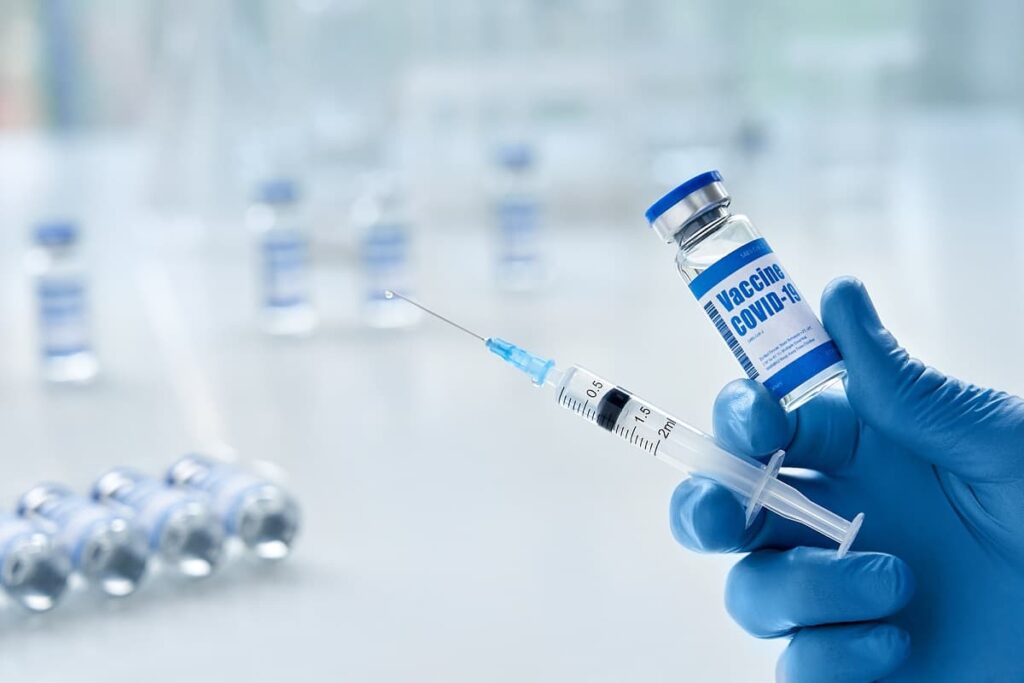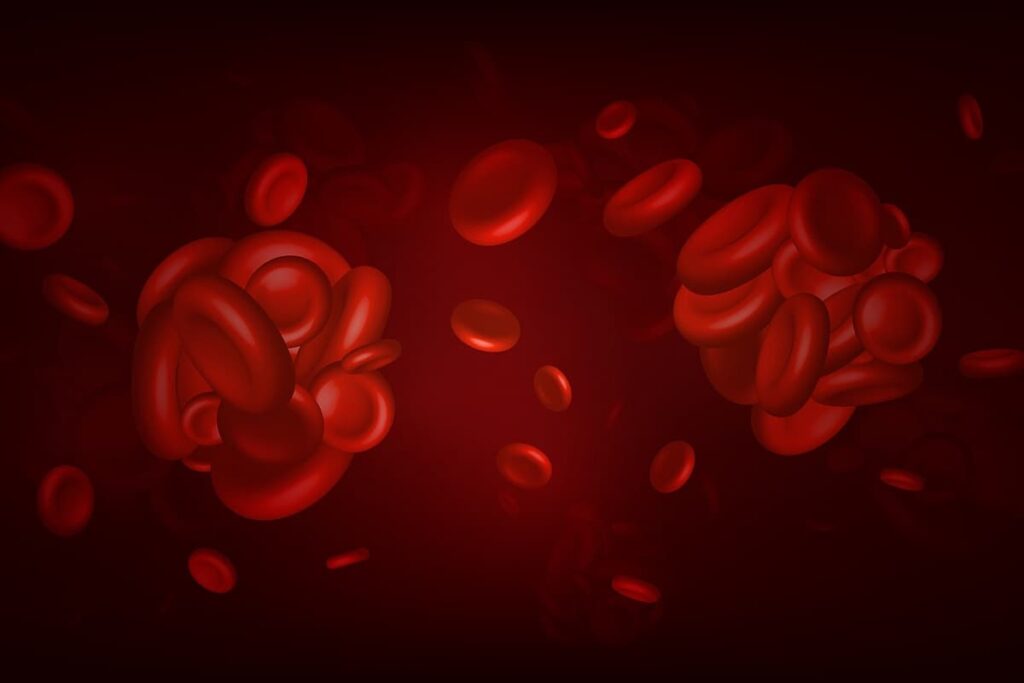Can Young Blood Transfusions Cure Age-Related Diseases?
Table of contents
Table of contents
- The History Behind Young Blood Transfusions
- The Science Behind Young Blood Transfusions
- Young Blood Transfusion Startup Dies a Quick Death
- Young Blood Transfusion is Regenerative Medicine
- Crikey, They’re Using Chronokines
- Going All in with GDF11
- Making Abundant Use of Blood Proteins
- Investing in Young Blood Transfusions
- Conclusion

History is full of little ironies, like the fact that ZZ Top band member Frank Beard was the guy without a hillbilly beard or that the owner of Segway died by riding a Segway off a cliff. Another little twist is that the modern-day concept of young blood transfusions – siphoning blood off from the young to reinvigorate the old – was first developed by a communist but has been fully embraced by the vampires venture capitalists of Silicon Valley like Peter Thiel.
The History Behind Young Blood Transfusions
Russian Alexander Bogdanov was what we might call a Renaissance man. He was a philosopher, writer, revolutionary, and physician. He was instrumental in establishing communism in Russia but later broke with the party and was exiled for a time. In the 1920s, the good doctor started experimenting with blood transfusions as a means for extending his life. He even wrote a science fiction novel about a Martian society that described his blood transfusion theories in detail. Bogdanov reportedly experienced some success – improved eyesight, cure for balding – before he contracted malaria and tuberculosis from a later transfusion and died what was probably a pretty horrible death.
It turns out that Bogdanov might have been on to something. Scientists have been playing the idea of parabiosis – a surgical technique that links the circulatory systems of two living animals – for more than 150 years. The first guy who also liked to bury kittens alive scientist to perform parabiotic surgery was a physiologist named Paul Bert, who stitched together two albino mice to determine if they could share one circulatory system. It worked, and the technique has been used in the decades since to investigate how different blood factors affect everything from tumors to immunity, according to a Nature article profiling the technique.

In the 1950s, scientists conducted some of the first parabiotic experiments specifically for aging research. In 1972, researchers studying conjoined pairs of young-old rats found that the older rodents lived several months longer than their carefree counterparts. That’s about the time parabiosis research peaked, and it was sort of forgotten until the early 21st century, when a new generation of scientists started studying how our lifeblood might be linked to life extension.
The Science Behind Young Blood Transfusions
Frankly, scientists don’t really understand the science behind young blood transfusions, except that they seem to work – at least in mice and rats. Researchers like Tony Wyss-Coray, Amy Wagers, Thomas Rando, and Irina and Michael Conboy, among a handful of others, have found that swapping young blood for old can restore liver cells, muscle cells, and even brain cells. Young blood transfusions – or at least some sort of plasma-based concoction or even synthesized drug – could potentially help treat diseases like Parkinson’s and Alzheimer’s. These scientists and their startups (more on that below) are investigating the possible role certain proteins may have in these sudden rejuvenations that appear to be reactivating stem cells.
Young Blood Transfusion Startup Dies a Quick Death
One startup called Ambrosia that couldn’t wait for a definitive answer opted to offer young blood transfusions at $8,000 a pop, following in the footsteps of comrade Bogdanov. The company, based in Monterey (of course), started generating headlines back in 2017 or so when it began offering bags of blood as an anti-aging cure. It took a while, but the U.S. Food and Drug Administration (FDA) put the kibosh on the whole thing when it issued a strongly worded statement in February that basically said it would be really, really stupid to pay thousands of dollars for someone else’s blood that doesn’t belong to Tom Cruise. After all, when people can die from poop transplants, plenty more could go wrong from a blood transfusion. Ambrosia subsequently shut down, and its founders went on to join Scientology. Most of that is true.
Young Blood Transfusion is Regenerative Medicine
What’s absolutely true is that research into young blood transfusions is still ongoing, though the big brains behind legitimate research probably wish the term would go away. In reality, the scientists and companies developing therapies based on young blood are targeting diseases that result from aging, like the neurodegenerative diseases we mentioned earlier. It would probably be better to describe their efforts as part of the larger field of regenerative medicine, which is focused on restoring the structure and function of damaged tissues or organs using everything from stem cells to 3D bioprinters. Let’s learn a little more about the regenerative medicine companies doing it with plasma.
Crikey, They’re Using Chronokines
We briefly introduced you to a company called Alkahest a couple of years ago as part of our ongoing coverage on human longevity, anti-aging companies, and life extension science. Founded in 2014, the Silicon Valley startup has raised an undisclosed amount of money, including a 2018 grant from the Michael J. Fox Foundation. Barcelona-based Grifols (GRFS), a global healthcare company that specializes in plasma-based therapies, is also a minority partner with a 45% share in the startup. The company’s co-founder is Wyss-Coray, one of the pioneers in the field, so Alkahest appears well positioned to make progress if the elixir of life is truly to be found in our blood. The company is developing several drug therapies based on its research on key blood proteins it calls chronokines.

One promising therapy for age-related macular degeneration just completed a clinical trial of an orally administered drug that blocks a protein called eotaxin that increases with age and is tied to certain age-related disease. Vision either improved or stabilized in more than 80% of the test subjects. Something to watch for down the road.
Going All in with GDF11


Scientists from Novartis have publicly challenged the scientific soundness of GDF11, arguing that injecting GDF11 actually accelerates aging. It will probably be a few years before we find out if Elevian is producing the real Holy Grail of aging or the fake one that turned the Nazi collaborator into a pile of bones in about 10 seconds during Indiana Jones and the Last Crusade.
Making Abundant Use of Blood Proteins

Investing in Young Blood Transfusions
As we noted earlier, the core business of publicly traded Grifols (GRFS:US) out of Barcelona, Spain is developing plasma-based treatments, diagnostic equipment, and other products and services that involve blood. So, if you’re an investor with Renfield syndrome, then Grifols is the right company for you, though you should know that its stock over the last five years has lost its investors nearly -20% compared to an +80% return on the NASDAQ composite.

However, Grifols recently saw some better numbers from a clinical trial of its Albutein 20%, a product that uses the same abundant proteins as OrthoSera, on moderate Alzheimer’s patients. The treatment, through a process called plasmapheresis, involves removing a large portion of a patient’s normal plasma, then injecting a solution of albumin back in. Patients experienced a 61% reduction in disease progression. Alzheimer’s patients have low levels of serum albumin, which is needed to clear out the plaques of amyloid that build up in the brain, though other factors (like removing the plasma in the first place) might also explain the results, according to an article in leapsmag. While no doubt more research is needed, the treatment could turn out to be a game-changer in the treatment of Alzheimer’s. That might warrant a bump in the company’s $16.09 billion market cap down the road.
Conclusion
The hype and subsequent failure around Ambrosia has probably not done any favors to the legitimate companies working on so-called young blood transfusions. The actual science around these plasma-based therapies is sound. In fact, new research came out just this month that discovered two additional proteins that may be present in young blood that could help regenerate old neurons. We’re encouraged to see some limited commercialization of these plasma-based treatments through a company like OrthoSera, though we’re likely years away from young blood transfusions that might reverse age-related conditions like Alzheimer’s or other diseases.
Sign up to our newsletter to get more of our great research delivered straight to your inbox!
Nanalyze Weekly includes useful insights written by our team of underpaid MBAs, research on new disruptive technology stocks flying under the radar, and summaries of our recent research. Always 100% free.














